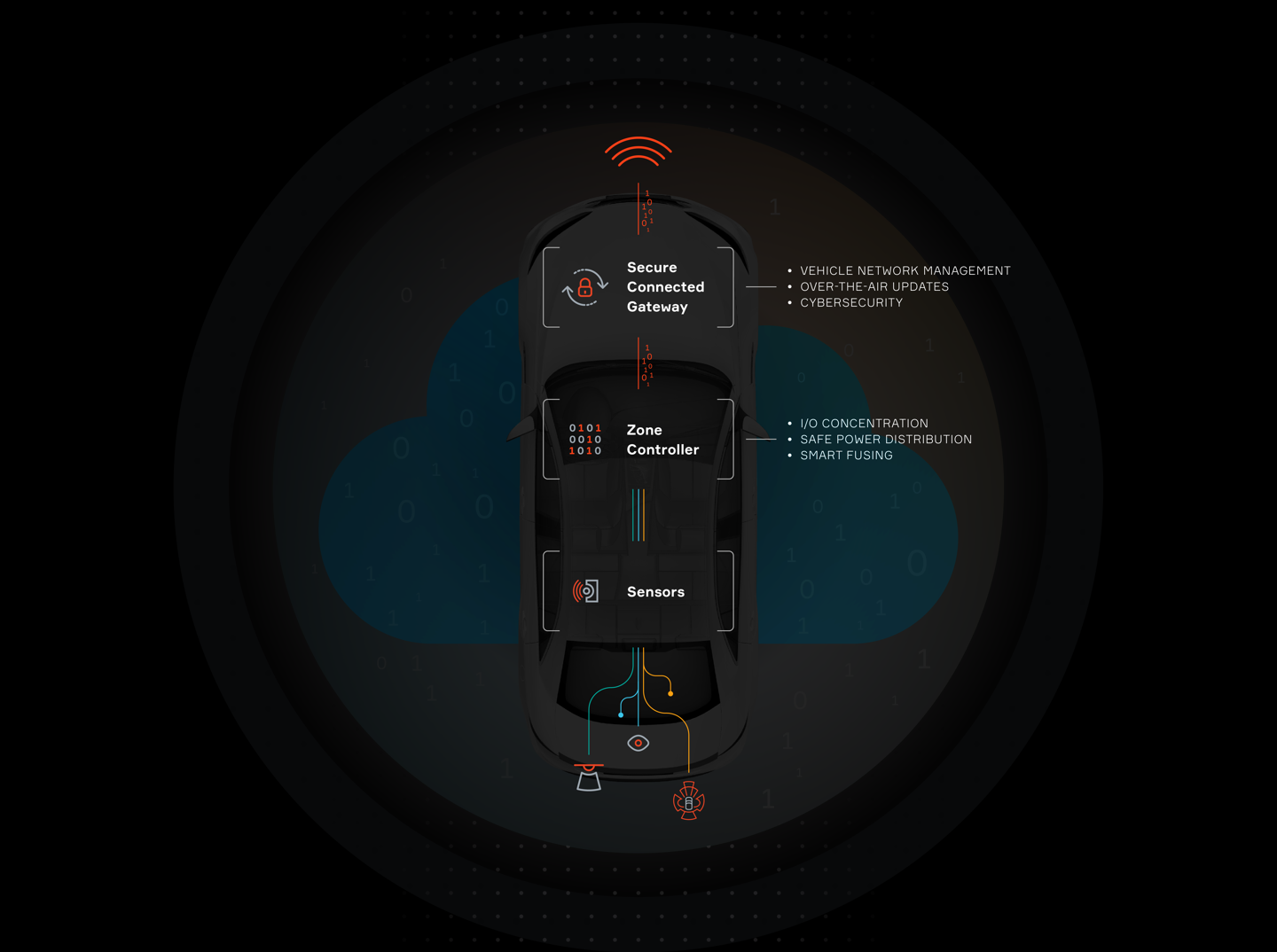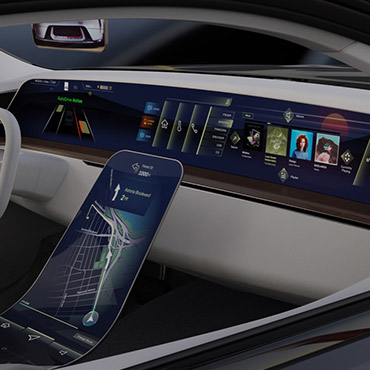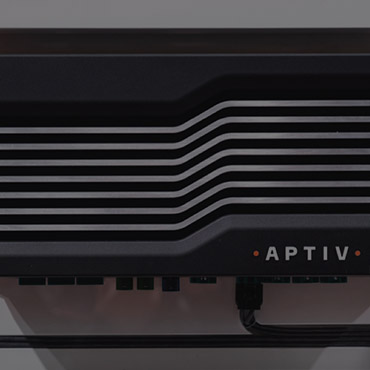Connectivity & Security
Vehicle control at your fingertips
Simplifying Vehicle Complexity
Reducing total cost of ownership while creating an open platform for innovation
Aptiv is an industry leader in systems that control and enhance the safety, comfort and convenience
of a vehicle.
Most people never think about vehicle features such as electronic doors and windows, electronic steering and braking, dynamic suspension and propulsion, or keyless access — despite using them every day. Each of these features is powered by an electronic control unit (ECU). Aptiv’s automotive-grade ECUs meet the most stringent safety requirements — such as fast wake-up and Automotive Safety Integrity Level D (ASIL-D) regulatory certification — ensuring they will work flawlessly in the harshest conditions for the life of the vehicle.
However, decades of incremental feature additions have resulted in vehicle architectures that are out of space and mired in unmanageable complexity. It is here that Aptiv’s Connectivity & Security solutions are meeting our customers’ toughest challenges and providing the core of Aptiv’s Smart Vehicle ArchitectureTM.

The ‘Digital Glue’ for the
Software-Defined Vehicle
Aptiv’s Connectivity & Security solutions perform key
functions that enable next-generation vehicle architectures.


Connectivity & Security Portfolio
Aptiv conceives, specifies and delivers next-generation architectures through these key products and services.

Electronic Controls

Central Compute

Data Management and Integration
Separation Brings It All Together
Smart Vehicle ArchitectureTM — or SVATM — is Aptiv’s answer to delivering a sustainable architecture. It simplifies complexity, unites diverse applications, and empowers our customers to control the software that defines their vehicles. A core building block for SVA™ is zone control, which brings these key advancements:
- It separates the I/O (input / output) from the compute inside a vehicle, significantly reducing physical complexity.
- It further simplifies design by delivering power and data via zone controllers, with each focusing on sensors or other components in a particular area of the vehicle — anything from radars and cameras to actuators such as pumps and electric motors.
- It frees up powerful domain controllers to focus on feature functions, which are likely to be on a different update frequency than the sensors and actuators.

The Right Way to OTA
Over-the-air (OTA) updates are giving the automotive industry a chance to reimagine the vehicle lifecycle, but it’s critical to have the right software processes and hardware architecture in place.
learn more
A New Approach to Development
To keep up with consumer demands for new functions, original equipment manufacturers (OEMs) must embrace new methods of developing software. Aptiv is helping in several key ways:
- Enabling a future where software is completely abstracted from hardware. This allows OEMs to use standardized application interfaces and develop applications with life cycles that are separate from the underlying hardware.
- Combining the middleware that performs this abstraction with software development tools. This allows OEMs to adopt a service-oriented architecture (SOA) approach and design components simultaneously for both AUTOSAR Classic and AUTOSAR Adaptive standards.
- Partnering with Krono-Safe. We are leveraging its technology that simplifies software integration and validation by creating a predictable and reproducible testing environment. As we combine this technology with other Aptiv solutions, we’ll shorten development cycles without compromising safety or performance.
Connected, but Protected
Today’s feature-rich, highly automated vehicles are creating enormous cost and complexity challenges for OEMs. Aptiv’s Connectivity & Security solutions address those challenges by enabling the transition to a software-defined vehicle. Such vehicles – which can easily exceed 100 million lines of code – are driving exponential increases in data generation, transfer and utilization. This is enabling manufacturers and suppliers to unlock new insights. We must also ensure those systems are protected, and Aptiv is doing so in several ways:
- Establishing a Secure Connected Gateway to manage the network in the vehicle – controlling both wired and wireless connections – and to be responsible for security, data collection and analytics.
- Making the gateway the single point of entry into and exit out of the vehicle to limit attack surfaces.
- Using our deep understanding of vehicle architecture to go beyond the traditional cybersecurity thinking of preventing the outside from getting in – and address cybersecurity from the inside out.
